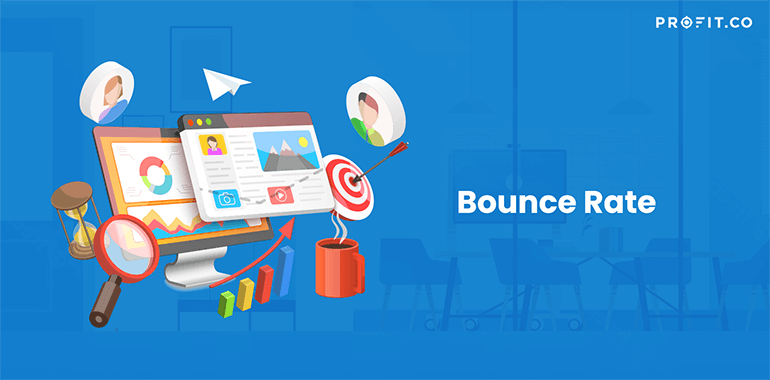Let us assume that you pass by someone you know, and they don’t say at least “hello!”. Well, this is basically a bounce rate. But in marketing and Internet slang, bounce rate means that somebody is visiting your website, opens it – and then just leaves without even navigating it. Quite frustrating, isn’t?
These bounce rates can, however, be avoided with certain methods. But before we get to those methods, we need to see exactly how we can calculate the bounce rate – before we try to troubleshoot it.
Calculating the Bounce Rate
To calculate the bounce rate, you need to know the number of visitors that leave the site without navigating it, and the total number of visitors that actually navigate it. Now, simply divide the number of visitors leaving the site after viewing only one page to the number of total visitors. After that, multiply by 100 to get a ratio.
The formula should look like this:
Once you’ve got the ratio, you can decide if you need to take actions or not. Taking the below steps will save you from not getting in one way or another, “friendzoned” or “seen.”
How to Diminish the Bounce Rate
When a visitor accesses your website, they will first look at your design – and if they are not attracted to the design or the site is hard to navigate, they will probably turn around. Try to figure out a way for the website to be user-friendly and without flaws and glitches. Also, by adding a comment button or suggestions tab, you will receive more insight on what’s wrong.
Having the message delivered clearly to the potential client or visitor is crucial. If the information is unclear, they will surely turn around. But by giving them too much information, you can make them turn around as well. Therefore, make sure that you hit just the right amount of information, so you won’t get them bored to death.
Pop-ups may help you in one way or another – but putting too many on your site will get the visitor irritated. Getting rid of some unnecessary pop-ups will ease the navigating and the site will be much more accessible.
Targeting wrong people on the website will get you nothing but trouble. Be sure to target just the right audience and don’t go off topic in any of the pages. Only do that if you really need to provide additional information. Also, making sure that the page has no delays or hold-ups is essential. That’s why you’ll need to have a suggestion button so that the visitors can tell you directly about the navigation problems.
To conclude the information above, the bounce rate is a menace when it goes to high. And when that happens, you’ve got a few solutions to avoid this. By simply removing the navigation problems, you will experience a lower rate of bounce back. Listening to the visitors is a big step – and above that, visiting your own website will get you in the shoes of the visitor.
